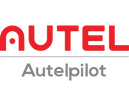UAV drone inspections are widely used in many industries and scenarios. As a high-end inspection tool, Drones shoot and collect video clips and photos of the status of inspected objects. The safety, timeliness, accuracy, and cost advantages of drone inspections have been continuously discovered, and drone inspections have greatly promoted the efficiency of inspections in various industries.
Drones usually collect photos and videos through visual data, which requires checking that the drone is carrying a high-quality RGB camera sensor. While cutting-edge drone inspections are equipped with thermal sensors, radar sensors for more data images.
Using Drones for Home Inspections & Infrastructure Inspection
As far as drone inspections are concerned, they can generally be divided into two categories--home inspections and industrial inspections.
Home inspection usually refers to the use of drones for house inspections. During this period, drones can obtain visual images and thermal images, which can fully demonstrate the overall condition of the house, be used for maintenance, assess asset value, and so on.

Related More: 【2024】Top 5 Best Drones for Roof Inspections
In drone industrial inspections, drone pilots can fly drones indoors and outdoors to inspect a large number of industrial assets, such as Transmission Line Inspection, Transmission Poles And Towers Inspection, Substation Inspection, Oil Rig / Refinery Inspection.
Benefits of conducting drone inspections
Safety: Drone inspections eliminate the need for personnel to physically access dangerous or hard-to-reach areas. This reduces the risk of accidents, injuries, and even fatalities that can occur during traditional inspections conducted by humans.
Cost-Effective: Drone inspections are often more cost-effective compared to traditional inspection methods. They require fewer resources and manpower, resulting in reduced operational expenses. Drones can cover large areas quickly, increasing efficiency and reducing labor costs.
Efficiency and Speed: Drones are equipped with high-resolution cameras and advanced imaging technologies that can capture detailed visuals and data. They can quickly inspect a large area in a fraction of the time it takes for manual inspections. This allows for faster decision-mak ing and problem-solving.
Access to Difficult Areas: Drones can easily access areas that are difficult, dangerous, or impossible to reach by humans. For example, inspecting tall structures, rooftops, bridges, or power lines can be efficiently done using drones. confined spaces , providing valuable insights into otherwise inaccessible areas.

Accuracy and Data Collection: Drones can capture high-resolution images, videos, and thermal data, providing accurate and detailed information. This data can be analyzed to identify potential issues, defects, or anomalies. Real-time data collection allows for immediate analysis and informed decision-making.
Preventative Maintenance: Regular drone inspections can help identify maintenance needs, structural weaknesses, or environmental concerns before they become major problems. By detecting issues early on, proactive measures can be taken to prevent costly damages or dis ruptions in operations.
Environmental Benefits: Drone inspections have minimal impact on the environment compared to traditional inspection methods. They reduce the need for heavy machinery, minimize emissions, and decrease disruption to natural habitats.
In summary
Drone inspections offer improved safety, cost savings, efficiency, and data accuracy. They provide access to difficult areas and enable proactive maintenance planning. Embracing this technology can enhance productivity, reduce risks, and contribute to a more sustainable and eff ective inspection process.








